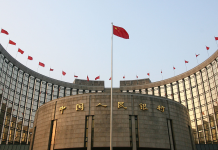From Dou Hongyu
Central Asia, strategically positioned between China and the Mediterranean region, has historically served as a crucial crossroad for trade and cultural exchange. It played a vital role on the ancient Silk Road, connecting the East and the West and facilitating the flow of goods, ideas, and technologies between civilizations.
However, in recent years, Central Asia has faced challenges in effectively fulfilling its transit region role, primarily due to geopolitical tensions and a weak economic foundation. As a result, there is an urgent need for the countries in this landlocked region to establish stronger connections with the outside world to stimulate regional growth and development. As one of the prospects of the Belt and Road Initiative (BRI) proposed by China in 2013, forging connections has become a common goal of BRI countries in Central Asia.
Infrastructure unlocks Central Asia’s potential
Former Kyrgyzstani Prime Minister Djoomart Otorbaev said that Central Asian countries need to develop as a single region rather than as individual countries. This requires regional public goods such as railway, electrical grids, and pipelines.
Transportation challenges pose a major barrier for Central Asian countries, with landlocked nations facing transport costs that are, on average, 50% higher than other countries (Source: UNCTAD). Kyrgyzstan, for example, has historically suffered from low transport efficiency, with an incomplete railway network spanning only about 400 km and a heavy reliance on rocky and bumpy roads. While Kyrgyzstan initially aimed to construct high-quality roadways as a development strategy, limited funding and technological resources hindered progress. With a GDP per capita below $1,300, the country faced challenges in both financing and accessing advanced technologies.
To enhance transportation infrastructure and promote trade within the region as well as between China and Europe, China is constructing a new highway in Kyrgyzstan within the BRI framework. The north-south road is twice the length of the existing Bishkek-Osh highway, making it possible to halve the cost of transporting goods from China through the northern part of Kyrgyzstan to the south, and then onwards to Uzbekistan and Tajikistan. The new highway will serve as the primary transportation route connecting the northern and southern regions of Kyrgyzstan, playing a vital role as an international transport corridor in Central Asia.
Beyond the facilitation of trade, the new highway has broader implications. Tagai Alimbaev, an Asian Development Bank project specialist in the Ministry of Transport of Kyrgyzstan, highlights that the north-south highway will also create opportunities for the development of hydropower stations and the exploitation of mines in remote mountainous areas.
In addition to the north-south highway, the China-Kyrgyzstan-Uzbekistan international highway has significantly enhanced transport efficiency. It has reduced the original transit transportation time from 8-10 days to approximately 2 days, leading to a notable decrease in freight costs, with the cost per ton reduced by $300-500. Additionally, the construction of the China-Kyrgyzstan-Uzbekistan (CKU) railway, which Kyrgyz President Sadyr Japarov emphasized as being as vital as air and water to his country, is set to start.
Transnational infrastructure connects countries with complementary needs
The Belt and Road Initiative, which seeks to provide public goods and achieve mutually beneficial outcomes, aligns perfectly with the needs of both China and Central Asian countries.
One typical example is the Central Asia-China gas pipeline, spanning 10,000 km and serving as the world’s longest natural gas pipeline. This pipeline has successfully transported over 400 billion cubic meters of natural gas to China, alleviating the pressure caused by China’s high demand for clean energy. Meanwhile, it has provided Central Asian countries with substantial foreign exchange earnings, allowing them to leverage their abundant natural resources for economic growth.
Furthermore, the construction of the pipeline has created employment opportunities for over 15,000 individuals in Turkmenistan, Kazakhstan, and Uzbekistan. Over the 30-year operational period, the pipeline is expected to generate tens of thousands of additional jobs and contribute tens of billions of US dollars in tax revenue. This not only strengthens economic development in the region but also promotes socio-economic stability and prosperity for the communities involved.
BRI is a bridge between peoples
In addition to infrastructure building, the BRI also create chances for people-to-people exchanges within the Central Asia and between the region and other countries. Take the collaborative archeological efforts as an example. Chinese and Uzbek archeologists have built a joint archaeological team to unveil the mysteries of the ancient Silk Road. The collaboration is supported by the BRI and has got special funding from China. In the past, archaeologists of Uzbekistan, Tajikistan and Kyrgyzstan seldom communicated with each other due to tensions among the countries. To conduct research on an archeological site shared by the three nations, Chinese archeologists built bilateral partnerships with experts from each country and worked to unite them. In 2019, Chinese experts invited the three countries to the Chinese city of Xian for a seminar, where they sat together to talk. Later, the four countries including China conducted the very first joint survey in Osh, Kyrgyzstan.
This archeological cooperation project has not only created opportunities for Central Asian students to pursue further studies under the guidance of Chinese experts, but also enabled Chinese archeologists and students to gain insights into local languages, customs, and traditions with the support of officials from Central Asian countries.
Supported by the Belt and Road Initiative, the archeologists are retracing the footsteps of their ancestors on the Silk Road, forging connections and understandings among people along the way.
Intra and inter-connection is hindered by challenges
While the BRI has greatly strengthened Central Asia’s connectivity with other regions, it is still facing some challenges. One major difficulty is the lack of efficient and strong intra-regional cooperation among Central Asian countries. Currently, the trade volume among these countries accounts for only about 10% of their total trade value. This limited intra-regional cooperation makes individual countries more vulnerable to global turbulences and less resilient. Additionally, the BRI faces competition from other countries and regions that are vying to provide public goods for the region. While the BRI is implemented based on extensive consultation, joint contribution and shared benefits, and never impose their projects to any country or elbow out other countries’ construction plans in the region, it is constrained and demonized by western powers that try to become the rule maker in Central Asia.
To address these challenges, China should further integrate with the development plans of Central Asian countries, such as Kazakhstan’s Nurly Zhol program. This will help the region achieve its goal of increased interconnectivity and expand the scale of mutually beneficial cooperation. It is also crucial to provide public goods in areas such as education and healthcare, and to enhance people-to-people exchanges.
These efforts will promote communication, build trust, and strengthen the overall connectivity within Central Asia, a region with immense potential to once again thrive as a pivotal transit point and prosper in the community of a shared future.
Dou Hongyu is a journalist with China Global Television Network (CGTN).






